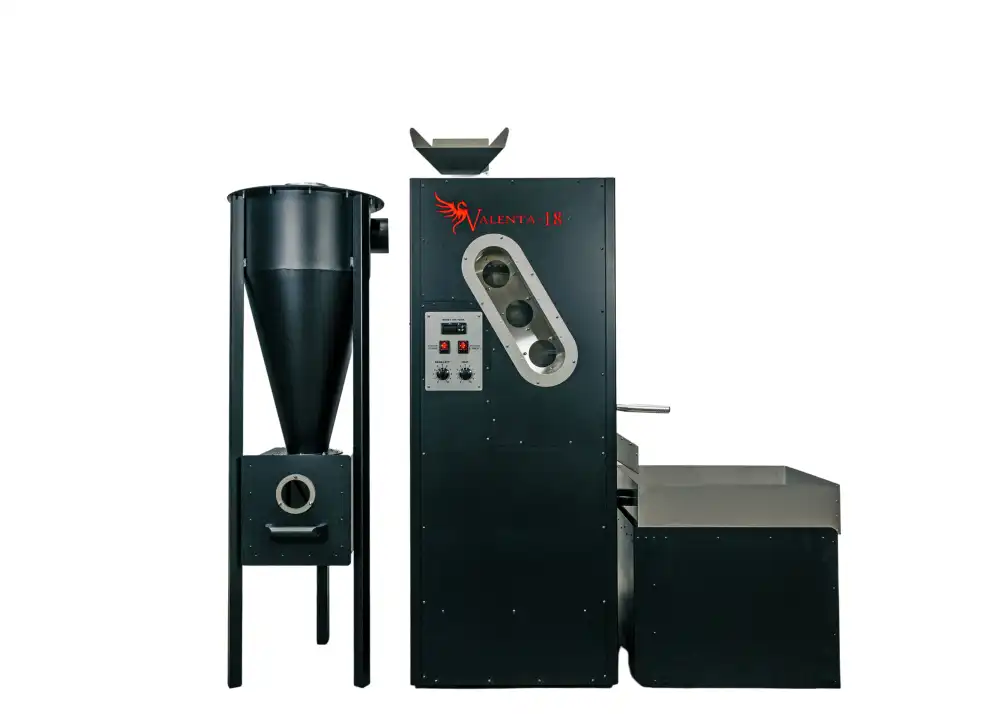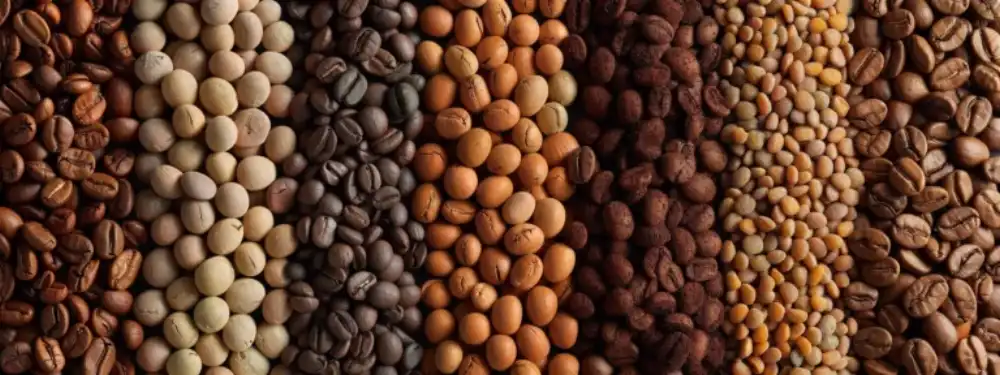Table Of Contents:
- Grinder Maintenance: How to Perform Burr Alignment, Static Reduction, and Calibration for Optimal Performance
- What Is Burr Alignment and Why Is It Crucial for Grinder Maintenance?
- How Can You Reduce Static in Coffee Grinders Effectively?
- How to Calibrate Your Coffee Grinder for Precise Grind Settings?
- What Are the Best Practices for Routine Grinder Maintenance?
- Which Replacement Parts and Accessories Enhance Grinder Maintenance?
- How Can You Troubleshoot Common Grinder Maintenance Issues?
- Where Can You Find Expert Grinder Maintenance Services and Educational Resources?
- Frequently Asked Questions
- Final Thoughts
Grinder Maintenance: How to Perform Burr Alignment, Static Reduction, and Calibration for Optimal Performance
This article explains why precise grinder maintenance is essential for ensuring consistent grind size, preserving coffee flavor quality, and extending the lifespan of your equipment. By understanding burr alignment, static reduction, and calibration, coffee roasters can optimize performance, reduce downtime, and maintain product consistency.
What Is Burr Alignment and Why Is It Crucial for Grinder Maintenance?
Burr alignment is the precise adjustment of the two grinding surfaces in your coffee grinder so they are perfectly parallel. Misaligned burrs create uneven grind particles that affect extraction and flavor balance. Correct alignment improves consistency, reduces burr wear, and ultimately lowers maintenance costs.
How Does Burr Alignment Affect Grind Consistency and Coffee Flavor?
When burrs are properly aligned, the coffee beans are ground uniformly. This uniformity leads to balanced extraction where neither fine particles are over-extracted nor coarser ones under-extracted. Maintaining consistent particle size helps enhance flavor brightness and body, ensuring that roasters meet brand quality and customer satisfaction requirements.
What Are the Signs Your Grinder Needs Burr Alignment?
Signs of misaligned burrs include an inconsistent mix of fine powder and larger chunks, a decline in shot quality (such as increased bitterness or sourness), unusual grinding noises, and increased resistance when dosing beans. Recognizing these symptoms early can help determine when alignment adjustments are necessary.
How Do You Perform Burr Alignment Step-by-Step?
Begin by turning off and unplugging your grinder for safety. Disassemble the burr set according to the manufacturer’s guidelines and clean all coffee oils and residues. Using a feeler gauge, check the space between the burrs at multiple points. Adjust the burr positioning incrementally, reassemble, and test the grind quality repeatedly until uniformity is achieved. Keep detailed documentation of each adjustment to track maintenance history.
What Tools and Accessories Are Needed for Burr Alignment?
Essential tools include a precise feeler gauge, torque wrench, and a burr alignment jig if available. A soft brush or compressed air is useful for removing debris without damaging components. These tools help ensure adjustments meet professional standards and support accurate calibration.
How Can You Reduce Static in Coffee Grinders Effectively?
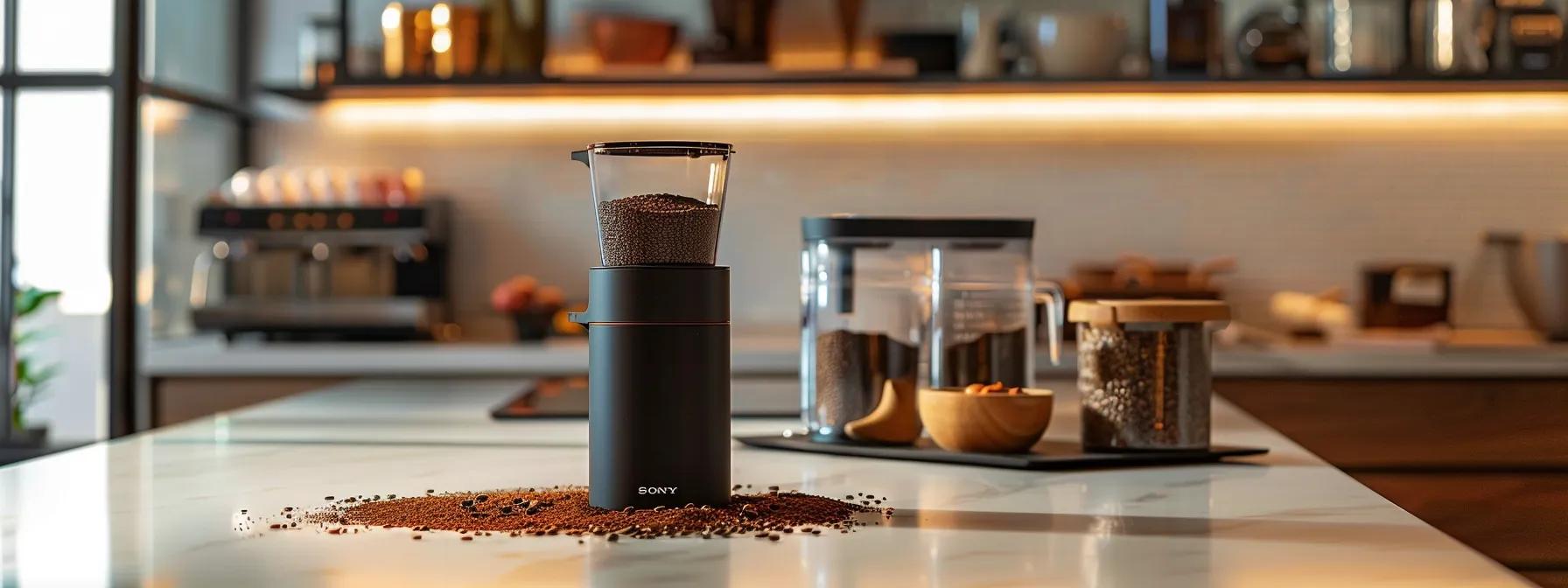
Static in coffee grinders is the buildup of electrical charge that makes coffee particles stick to surfaces, causing waste and inconsistent dosing. Reducing static is important for both efficient dispensing and maintaining uniform grind quality, which aids the overall production process.
What Causes Static in Coffee Grinders and How Does It Affect Grinding?
Static is mainly caused by friction between coffee beans and metal burrs. This triboelectric effect attracts fine particles to internal surfaces, leading to clumping and uneven dosing. Excessive static results in product loss and messy cleanups, reducing overall efficiency and impacting flavor extraction.
Which Static Reduction Techniques and Products Work Best?
Effective methods include slightly adjusting the bean humidity to neutralize charge buildup, using anti-static brushes, or coating burr surfaces with manufacturer-approved anti-static agents. Additional static reduction can be achieved by fitting grounded hopper attachments or specialized dosing devices, which have been shown to reduce static-related losses significantly.
How to Implement Static Reduction: Tips and Best Practices
Start by adjusting the moisture content of your beans and retrofit the grinder with anti-static accessories like conductive brushes or grounding wires to redirect charges. Regular cleaning removes residual oils and dust that encourage static buildup. Consistently using approved anti-static agents further minimizes static and ensures smooth operation.
What Are the Benefits of Static Reduction for Coffee Grinding?
By reducing static, you achieve a more uniform grind and dosing, leading to improved extraction and flavor stability. Lower static minimizes waste and promotes a cleaner work environment, while reducing the frequency of maintenance due to less residue buildup. These benefits support both quality control and return on investment.
How to Calibrate Your Coffee Grinder for Precise Grind Settings?
Calibration ensures that your grinder produces the correct particle size distribution for different brewing methods. A properly calibrated grinder optimizes extraction and flavor balance, which is crucial for high-quality coffee.
Why Is Calibration Important for Consistent Coffee Extraction?
Calibration aligns your grinder’s mechanics with specific brewing techniques, ensuring that water extracts the right balance of solubles during brewing. Consistent calibration avoids over-extraction or under-extraction, preserving the coffee flavor profile and repeatability of each batch.
What Are the Steps to Calibrate Different Types of Grinders?
For flat burr grinders, clean and inspect the burr surfaces, adjust the burr gap with a feeler gauge and torque wrench, then test a small batch. For conical burr grinders, similar care is needed while also checking the burrs’ rotational symmetry. Compare the grind distribution to a benchmark and document each adjustment to maintain consistency over time.
How Often Should You Calibrate Your Grinder?
It is advisable to calibrate your grinder every 2 to 4 weeks, depending on usage and bean type. High-volume operations might require weekly calibration, while smaller roasters can perform it monthly. Calibration is especially important after cleaning, burr replacement, or any alignment adjustments.
What Are Common Calibration Mistakes to Avoid?
Avoid over-adjusting burr gaps in one go or skipping the cleaning of burr surfaces before calibration. Relying solely on visual checks without precise measurements may lead to errors. Additionally, failing to document adjustments can result in repeated mistakes. Using proper tools and a systematic approach is key to avoiding these issues.
What Are the Best Practices for Routine Grinder Maintenance?
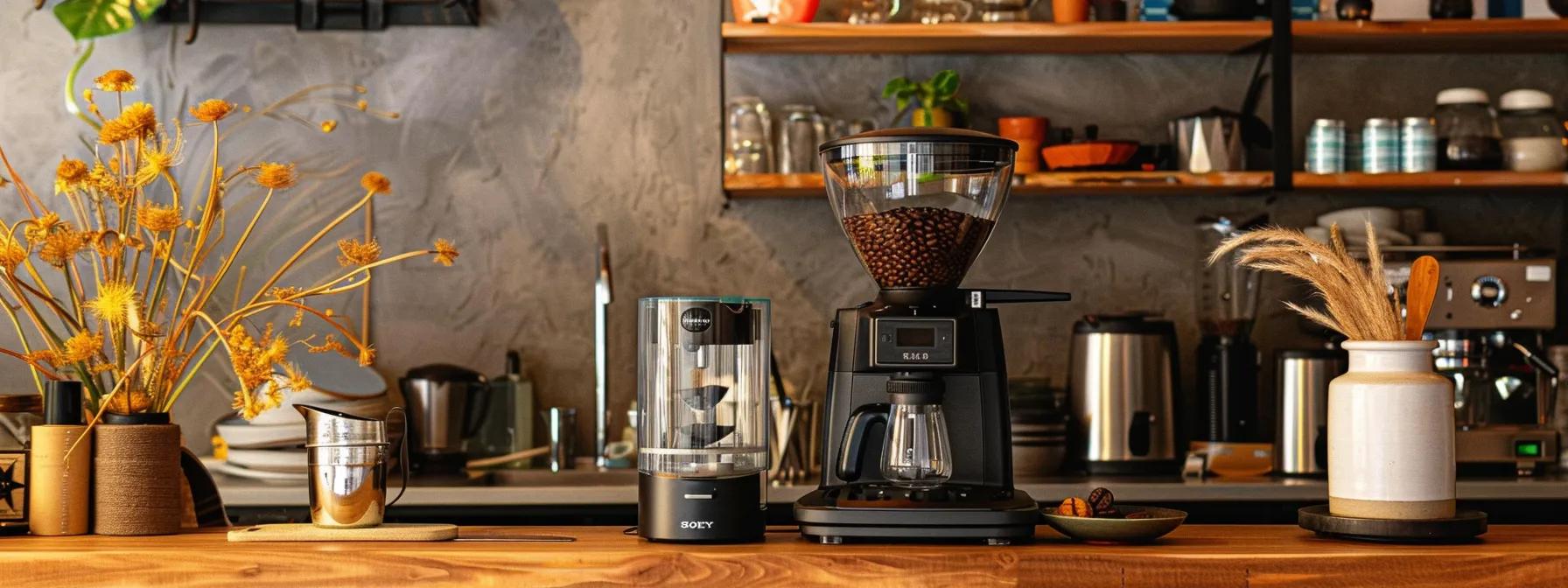
Routine maintenance is critical for the lasting performance of your grinder. Regular cleaning, periodic burr alignment checks, and consistent calibration routines ensure reliable operation and high-quality coffee production.
How Often Should You Clean and Service Your Grinder?
In high-volume settings, clean and service your grinder at least weekly, while in lower usage scenarios, biweekly servicing is sufficient. Daily cleaning of accessible parts helps prevent residue buildup, and deeper cleaning sessions (including disassembling burrs) should be done monthly to reduce static and improve calibration accuracy.
What Cleaning Methods Support Burr Alignment and Static Reduction?
Using compressed air, soft brushes, and specialized cleaning pellets helps remove dust, oils, and debris effectively. These methods support both burr alignment and static reduction. Always use food-safe cleaning agents to preserve the flavor integrity of your coffee.
How to Inspect Grinder Parts for Wear and Tear?
Regular inspections should involve checking burrs for signs of wear, such as chipping or uneven surfaces. Also inspect the dosing mechanism, hopper, and seals for any deterioration. Use calipers for precise measurements when needed and document any changes to plan for replacement before issues arise.
Which Replacement Parts and Accessories Enhance Grinder Maintenance?
Upgrading components with high-quality parts can significantly improve maintenance outcomes and overall performance. Replacement parts designed for coffee roasters help maintain precision and reliability even after prolonged use.
What Burr Types and Materials Improve Alignment and Performance?
Modern burrs are offered in materials like stainless steel, ceramic, and high-alloy titanium. Stainless steel is known for durability and consistency, while ceramic burrs help reduce heat and static. Upgrading to premium burrs can lead to better extraction profiles and reduce the need for frequent maintenance.
How Do Static Reduction Accessories Work and Which Are Recommended?
Static reduction tools, such as anti-static brushes and grounded dosing cups, work by neutralizing the electrical charges that pull coffee particles to surfaces. Using accessories that are compatible with your specific grinder model ensures optimal performance and cost efficiency.
What Calibration Tools Are Essential for Accurate Adjustments?
Essential calibration tools include calibrated feeler gauges, torque wrenches, and digital micrometers. These instruments provide the precision needed to measure burr gaps accurately. Regular recalibration of your tools also helps maintain the overall accuracy and reliability during adjustments.
How Can You Troubleshoot Common Grinder Maintenance Issues?
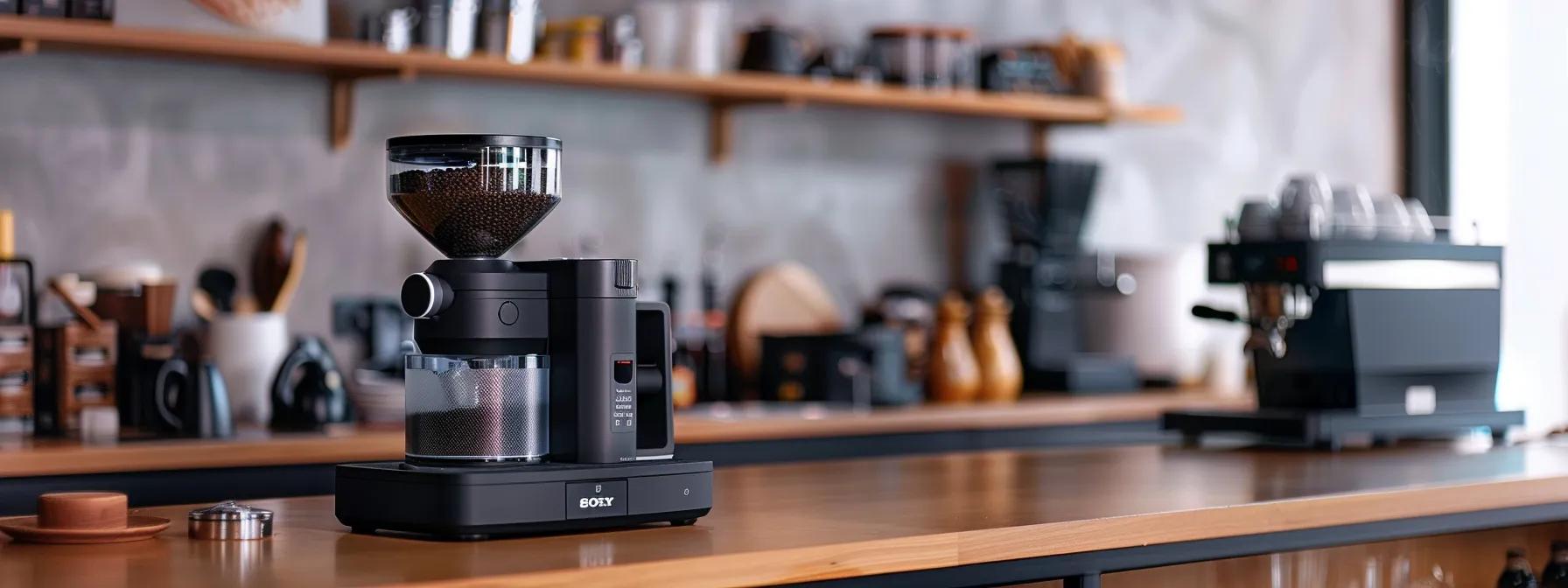
Effective troubleshooting involves identifying issues like uneven grind size, persistent static, or calibration problems. A systematic approach to diagnosing these issues helps restore the grinder to optimal performance quickly.
What Causes Uneven Grind Size After Burr Alignment?
Residual debris, microscopic burr wear, or misalignment of the grinder’s housing can cause uneven grind sizes. A comprehensive cleaning and rechecking of the burr gap usually resolves these issues. Addressing burr wear and ensuring correct tightening are essential for long-term consistency.
How to Fix Persistent Static Problems Despite Reduction Efforts?
If static continues to be an issue, inspect the grinder’s grounding and electrical connections. Upgrading to specialized anti-static components or applying food-safe anti-static agents may help. Also, consider adjustments to ambient humidity and environmental controls to further reduce static.
What to Do When Calibration Doesn’t Improve Grind Consistency?
If calibration efforts fall short, review all maintenance steps for potential oversights such as worn burrs or misaligned feed mechanisms. Replacing worn components and seeking professional assistance may be necessary. Careful documentation of each step assists in identifying recurring issues.
Where Can You Find Expert Grinder Maintenance Services and Educational Resources?
Expert maintenance services and educational resources are valuable for keeping your equipment in optimal condition. Professionals have the tools and experience to extend your grinder’s lifespan, and detailed tutorials can guide routine maintenance practices.
- Manufacturer Support Websites
Grinder manufacturers such as Mahlkönig, Ditting, and Baratza provide official service documentation, maintenance guides, and certified technician directories on their websites. Link to these in your WordPress content using outbound links for SEO benefit. - Authorized Dealers and Service Centers
Companies like Espresso Parts, Seattle Coffee Gear, and Prima Coffee offer maintenance services and often publish blog posts, manuals, and instructional videos. Embed these resources or link directly to specific articles or service pages in your WordPress posts or custom blocks. - Specialty Coffee Association (SCA)
The SCA offers professional training and certification courses, including grinder calibration and repair. You can link to their education pages from your WordPress site or embed their events calendar using iframe or plugin tools. - Online Video and Forum Resources
Educational content from creators like James Hoffmann or Clive Coffee can be embedded directly into WordPress posts using the YouTube block. Forums such as Home-Barista.com or Reddit’s r/coffee provide community-driven support and troubleshooting, which can be referenced in blog content. - Local Coffee Equipment Technicians
Many independent technicians offer grinder repair services and publish educational content on their business websites. Use Google Maps embed or a plugin like WP Store Locator to help your visitors find local service providers.
What Are the Benefits of Professional Burr Alignment and Calibration Services?
Professional services deliver precise adjustments that can be challenging for individuals. They use specialized tools and expertise to quickly diagnose and fix issues, reducing downtime and ensuring higher production quality. Over the long term, these services can lower operational costs and enhance extraction consistency.
Which Online Tutorials and Videos Best Demonstrate Grinder Maintenance?
Many reputable online platforms and manufacturer websites offer comprehensive tutorials on grinder maintenance. Instructional videos and peer-reviewed content can provide step-by-step guidance on burr alignment, static reduction, and calibration, helping roasters refine their techniques.
How to Choose the Right Maintenance Service Provider?
When selecting a service provider, evaluate their credentials, customer reviews, and service guarantees. Look for providers with extensive experience in coffee equipment and strong technical support. Choose a provider that meets your budget and operational needs while ensuring sustainable repair solutions.
Frequently Asked Questions
Q: How can I recognize when my grinder’s burrs need realignment? A: Look for inconsistent grind sizes, unusual noises, or noticeable changes in coffee flavor profile.
Q: What is the most reliable method to reduce static in coffee grinders? A: Combining regular cleaning with anti-static accessories and proper humidity control is most effective.
Q: Why is proper calibration so crucial for coffee extraction? A: Consistent calibration produces a uniform grind, vital for balanced extraction and maintaining flavor integrity.
Q: Can I perform grinder maintenance on my own, or should I hire a professional? A: Routine tasks can be done independently, but complex alignment and calibration may benefit from professional expertise.
Q: How frequently should grinder calibration be rechecked? A: Recheck calibration every 2 to 4 weeks, based on usage and environmental conditions.
Q: What tools are essential for DIY grinder maintenance? A: A feeler gauge, torque wrench, soft brush, and food-safe cleaning agents are recommended.
Q: How do anti-static accessories contribute to a more efficient grinding process? A: They neutralize electrical charges, reducing waste and ensuring efficient transfer of ground coffee.
Q: What environmental factors can affect both static buildup and calibration accuracy? A: Ambient humidity, dust levels, and temperature variations impact static formation and calibration consistency.
Final Thoughts
In summary, careful attention to burr alignment, static reduction, and calibration improves both grind consistency and overall coffee flavor. Regular cleaning, inspection, and timely adjustments extend the lifespan of your grinder and ensure peak performance. By investing in proper maintenance routines and utilizing professional services or quality educational resources, coffee roasters can achieve reliable operation and better extraction results, ensuring a consistently high-quality cup of coffee.



